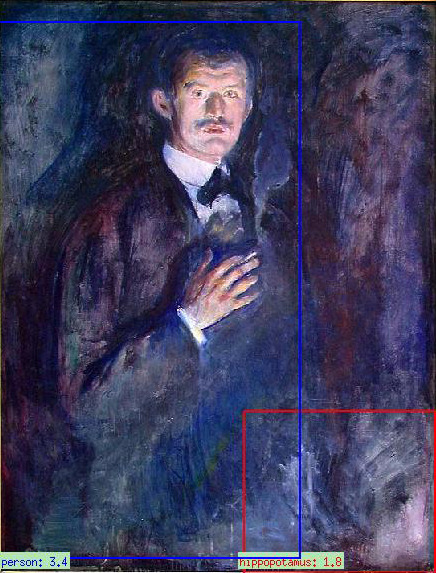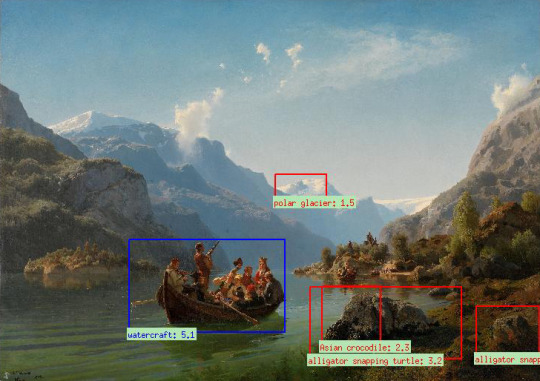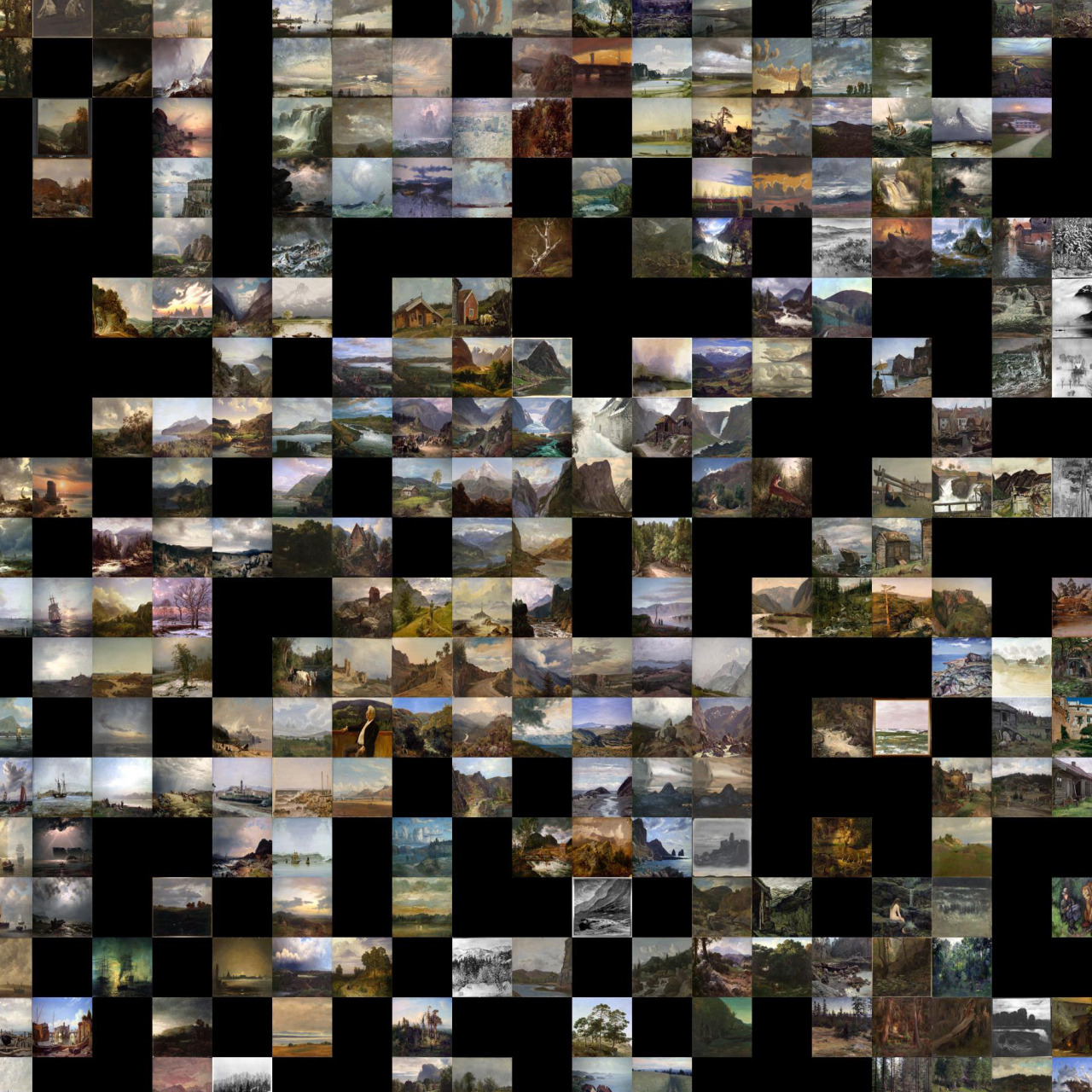We’re starting a new project with the Norwegian National Museum looking at how machine learning and deep neural networks can be applied to their collections. Both to easily add metadata, but also just to explore the context free gaze of machine classification. A cognitive counterpart to scary robots, machine vision in its current state sits uncomfortably in the uncanny valley of human facsimile

Misclassifications 1: Edward Munch - Self-Portrait with Burning Cigarette and Hippo Snout

Misclassifications 2: Adolph Tidemand & Hans Gude - Bridal Procession on the Hardangerfjord amongst Alligator Snapping Turtles
At the moment we’re doing some initial tests. A model has been retrained to classify periods in art history on Wikimedia arts. The retrained model has in turn been used on the collection of the museum to lay out maps of paintings based on their perceived similarity. Preliminary data is promising and could already be used to build novel user interfaces to aid in comprehension and exploration of collections.

A scattering of t-distributed stochastic neighborhood embedded national romantic landscapes
On this project we are working alongside Audun Mathias Øygard. Audun gained a degree from the Oslo Academy of arts before studying mathematics at UiO. He recently finished his graduate work on image classification using convolutional neural networks.
This project follows up on a project with the musem from two years ago, Repcol, an exploratory data visualization investigating representativity in the collections.
Principal Components is funded by the National Arts Council and the Norwegian National Museum.
More from the blog
- Bengler Wins Jacob’s Prize 2016
- Simen made an opera about transhumanism*
- Deep Learning at the Museum
- Status / Arrivals
- Lego vs. Lego
- Spare Time Protein Origami
- GRBL with permissive license (MIT)
- We're building a 3d printer!
- Terrafab, now available in huge and tiny
- Checkpoint: Repcol
- Launch: Mapfest!
- Being in Nothingness
- Planning the brewery
